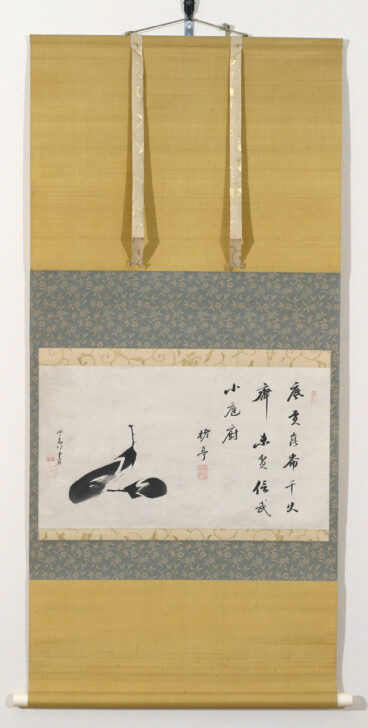Three Eggplants and a Poem
Itō Jakuchū

Description
While the conventions for composing poetry (waka) were rigid, calligraphy provided a wider scope for creative expression. By modulating their brushstrokes, calligraphers could present traditional poems in new ways.
Itō Jakuchū’s thick, painterly brushstrokes, for example, are spontaneous and frenetic. In contrast, in the work Eggplant and Calligraphy by the artist Otagaki Rengetsu (also in UMMA’s collection, 1964/1.98), brushstrokes are more measured, perhaps speaking to the latter’s skills as an accomplished potter.
Subject Matter:
"Itō Jakuchū, son of a greengrocer, used vegetables and plants as a personal iconography that almost always included a moral or religious meaning."
“Bean Vine.” Metmuseum.org, www.metmuseum.org/art/collection/search/40462.
Physical Description:
On the left side of the hanging scroll, there are two eggplants. On the right side of the hanging scroll, there is a poem. There is also a signature and seal by the artist. Surrounding the paper on the hanging scroll is a gold border with a swirl pattern, then a larger blue border with a flower pattern, then a larger solid brown color.
Usage Rights:
If you are interested in using an image for a publication, please visit https://umma.umich.edu/request-image/ for more information and to fill out the online Image Rights and Reproductions Request Form.